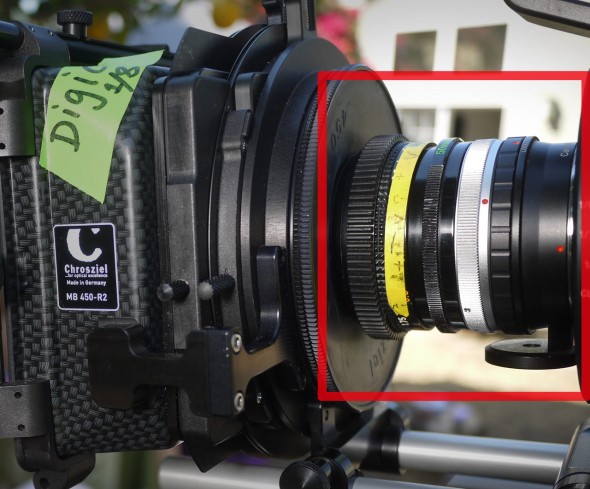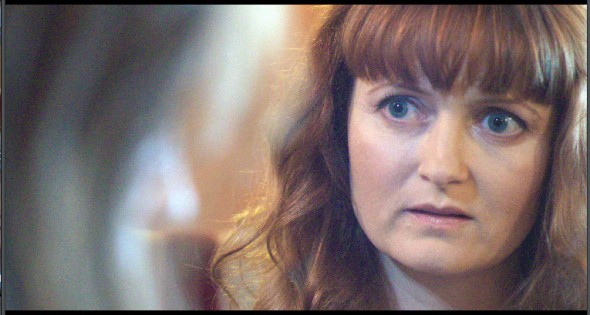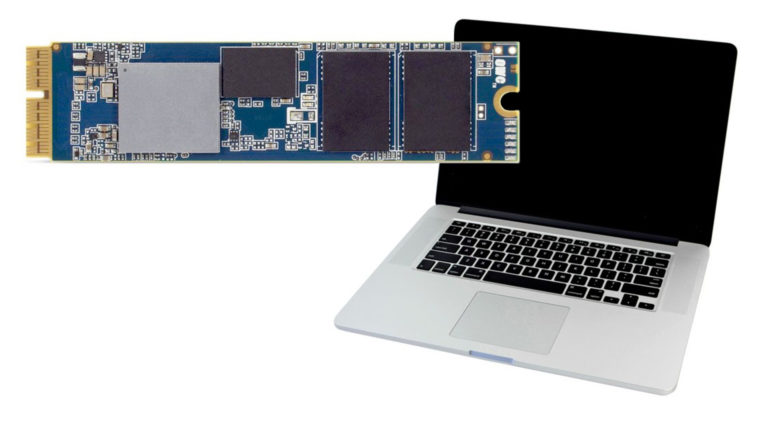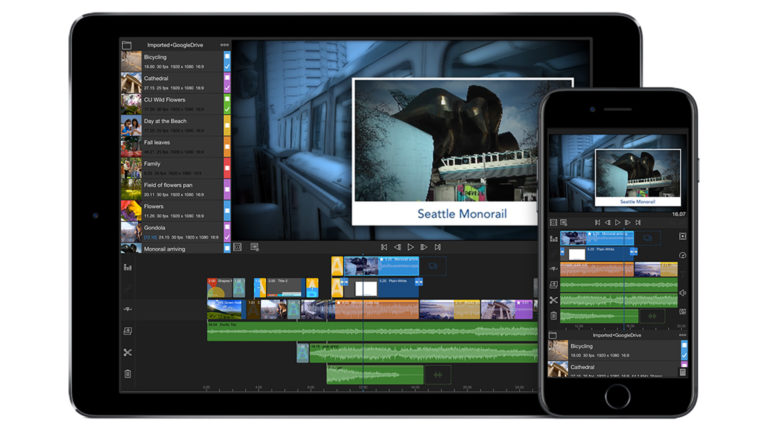Enjoying Inexpensive 4K and All-Natural Raw on Set, with Some Quibbles
I’ll admit I’m not a big fan of 4K. It’s a bear to deal with, manage, and store. Still, there is no denying that 4K capture may produce superior HD images, with the additional fine detail and reduced noise making a much better HD picture than originating in HD in the first place.
The Sony FS700, upgraded with the latest version 3 firmware, brings practical 4K raw to the masses for the first time — a significant milestone given the camera’s relatively low price and the fact that Sony only mildly constrains the raw signal emanating from the sensor. Other raw approaches may entail substantial noise reduction and other manipulation, but the Sony strategy is more straightforward. Like the phrase all-natural when it comes to yogurt, the term raw has become a buzzword among shooters in the online forums — but camera manufacturers' implementations of raw are so wildly different that the term itself has been rendered almost meaningless.
4K That's Good for You
Preloaded with the version 3 firmware, the Sony FS700R and RH include capabilities that are not found in even the company’s top F5 or F55 models, such as simultaneous recording and 4K raw recording in four-second bursts at 120fps to the internal buffer. (Too bad there’s no way to play back this much data in real time from a memory card or SSD; once again the recording medium itself continues to be the bottleneck on the road to 4K nirvana.)
In pro cameras, the SDI output is typically 10-bit, but in raw mode the FS700 outputs a proprietary 12-bit signal via 3G-SDI. This complicates the task of third party recorders like the Convergent Design Odyssey, which can only capture a 12-bit 2K raw signal. Sony has thus far not allowed third parties like Convergent Design to record the 4K raw data. For this, shooters must use the Sony’s own 4K recorder and interface — the AXS-R5 ($6,294) coupled to the HXR-IFR5 ($2,500). For existing owners of the FS700, the firmware upgrade requires the camera to visit a service center along with $400, but the charge is waived with proof of purchase of the IFR5 interface unit.
The new FS700RH with 2K and 4K raw capture. The camera outputs to the interface and recorder via 3G-SDI. Recording is in 12-bits, which is not fully supported in third party recorders or Resolve. Use the Sony raw viewer to apply one of the four default LUTs as a starting point for grading, then export the treated footage as a dpx file into your NLE.
Performance vs. Operation
There is no question how well the FS700 performs. At 4K, its images have a roundness with a pleasing organic look that can be tweaked later almost without limitation. It is safe to say that no other camera at a $7,800 price point can do what the FS700 can do.
The real drawback to 4K image capture is fast becoming solely a function of optics. Satisfactorily capturing high-resolution images in 4K demands the highest-performance (i.e. expensive) lenses we can find in order to offset the sudden increased visibility of once well-concealed optical defects.

Why 4K? While the normal scenes in Space Cowgirls were captured in 2K, the dream sequences like this one in the Rabbit Hole Café were shot in 4K to allow more extreme manipulation in post.
Recently I had the opportunity to shoot with the updated FS700 in conjunction with a new web series, Space Cowgirls, penned by Allyson Adams and directed by Adele Slaughter. The scenario about a woman on the edge of insanity included stylized visions that the producers wished to manipulate, crop, and “float” in a seemingly serendipitous fashion. So while the bulk of the production would be shot in 2K, those vision scenes would be captured in 4K to maximize flexibility inside the larger frame.
4K capture demands superior optics. The use of vintage SLR lenses, especially wide open, may produce images that lack good contrast and punch. 4K cameras do not necessarily make 4K pictures!
The vintage Canon FD-series lenses selected for the shoot offered a nice range of focal lengths from 20mm to 135mm with decent functionality, but their performance at 4K resolution was less than stellar. The images exhibited noticeably reduced contrast, increased flare, curvature of field, and many visible chromatic aberrations, The FS700 recording in 4K may indeed be the best and most economical solution around, but let us recall that 4K capture, in and of itself, doesn't necessarily produce 4K images. We still very much need the appropriate quality optics to go with it.
The FS700 applies no gamma curve or noise reduction to data from the sensor. Recording in raw is linear. There is no log option.
Gripes from the Trenches
The operational aspects of any camera must be considered, and this is where the FS700’s shortcomings, due to its low price, become apparent. The flimsy remote plug is a case in point. So is the clip-on viewfinder that offers little functionality. The maddening LCD screen does not articulate properly in all directions and is a real chore to work with. Same story for the line-up of menu and control buttons placed on the operator side of the camera, making them inaccessible to my harried camera assistant. These are real drawbacks from an operational perspective, and we shooters who regularly work with more professional gear are quick to complain (sometimes we even resort to good old-fashioned bellyaching in articles like this one).
The FS700 2K and 4K configuration requires outputting the raw signal through a BNC connector that is prone to physical stress and damage under the rigors of typical production mayhem. We know too well that cables and connectors are the leading cause of equipment failure in the field. Recall how much more reliable camera systems became years ago, with the advent of on-board batteries, for example. Of course, routing the BNC cable to an external recorder is common practice these days, given the popularity of the AJA Ki Pro and similar recorders. Still, this over-reliance on a single fragile cable and connector gets me nervous.
The R5 recorder and interface may be mounted on the rear camera rails, but this is not really practical owing to the clumsiness of the extended configuration and a noisy fan that effectively precludes placing the recorder anywhere near the set. Sony reports that a quieter replacement fan is in the offing, along with updated firmware that will automatically disable the fan during recording in the style of the F5 and F55 models. FS700 shooters should confirm their firmware is up to date — it's up to v3.0 as of this writing, and v1.2 for the recorder interface.
Speaking of the R5 recorder, the behavior of the auxiliary jack proved a bit too enigmatic for my fine seasoned crew. Apparently the downconverted output is only enabled in 4K. In 2K, that connector is non-functional. Huh? Whatsa? Who would’ve thunk?
Very high-resolution images can be very unflattering to actors. A weak diffusion filter like a Schneider Digicon is often imperative when shooting actors' close-ups. As shooters, we must often reduce camera resolution in order to produce acceptable results. It makes you wonder, doesn't it? What the heck are we doing?
Raw Power
Every camera system has its share of operational shortcomings, and the FS700 is no different. Given the breadth of its capabilities, now including 2K and 4K raw recording, this is a camera that makes sense for a great many folks who appreciate the good taste of all-natural raw images.

















Yes.
photographs are supposed to be seen on paper, in reflective light, in a magazine 10″x7″ size or something… video materials are watched on monitors 20″ in size in incident light (you can watch on in complete darknes), both of them from almost same distance. so important is the size of the medium. monitors are bigger than photographs.
I think my post of “Yes” was in response to this original 4K Raw announcement. I’ve already made some commercial projects with this setup: https://vimeo.com/130555527
What’s the minimum investment to get 4k from the FS-700 including camera body, firmware update, recorder, cables, codec rental (is that required?) and a suitable lens?
Given that the FS-700 costs ~$16,500 to get up and running in 4K raw, you’re starting to get into the territory of the Scarlet – a camera which is not incredible to work with, but I still like the pictures better than anything Sony has to offer, with the exception of the F65.
The buttons on the operator side thing is something Sony seems to enjoy – and it’s frustrating to say the least. I’m sure it’s great for those doco, corporate and reality shooters who don’t get assistants but it’s ridiculous for those who do work with assistants.
At least on a Scarlet, you can get a REDmote for $500, which can live in your assistant’s pocket if it has to.
Perhaps the lower contrast came from the Digicon you were using – it’s certainly an extremely weak way to soften an actor’s skin.
Also, 4k capture in and of itself technically does produce a 4k image – even if you were to use the lowest quality glass you could find, as long as the image is 4096 x 2160 it’s a 4k image.
The quality inside that image is a different story – even with high quality optics 4k cameras are only recording a mish-mash of red, green and blue – certainly not 4k of red, 4k of blue, and 4k of green (something that 3-chip cameras do/would do if in 4k, and that film does), so at this point in time any digital 4k acquisition is still hampered by that. This is why the F65 has an 8K sensor to deliver 4K images, and part of the reason the C300 has a 4k sensor to deliver HD images. This is why it is recommended to shoot 4k+ for 2k delivery.
Better image quality will trump 4k anyday – and that’s why the Alexa is so popular. Whilst many cameras have the upper hand in terms of physical resolution, the Alexa looks better than just about anything else out there.
One last comment – BNC has been a connector of choice for years in the professional industry. I agree, they can be fragile but with the right cables, and right amount of care by experienced crew, you shouldn’t find too many issues. They are certainly much more sturdy than HDMI and other alternatives.
As well, it’s pretty common these days to record onto external recorders, even (especially?) on the highest of budgets and even in rough conditions – using BNC connectors. Even the Codex on-board to record 3.8K raw on the Alexa uses BNC.
BNC has the benefit of being ubiquitous. I guess each camera manufacturer could design their own proprietary (and incredibly expensive) ‘safe’ connector system, but it would be unrealistic.
I have to say I still don´t understand this camera market niche.
For HD, it´s needlessly expensive, and not particularly good or comfortable.
For 4k RAW, when you add all the bells and whistles, you end up with a rental camera (I.E. one you don´t actually buy), and it´s rental value is not that different from a much better F55, or a much better looking Alexa.
Besides, having to adapt the sony proprietary mount seems like a bitch,
Also, I am puzzled about the authors comment on SLR glass. Since they were designed with a MUCH, MUCH higher resolution in mind (I´m talking north of 20k lines), albeit, on a somewhat larger format, I don´t see why they would offer an image unsuitable for 4k.
This is an actual question. Could anyone be kind enough to explain this for me?